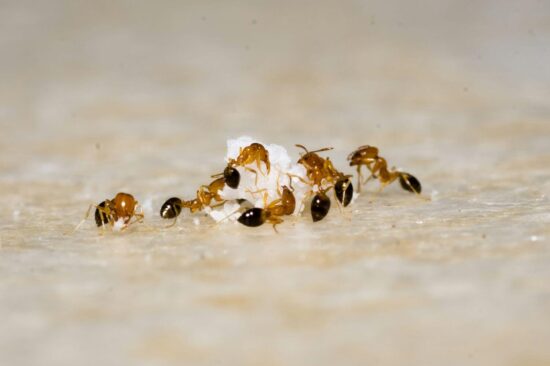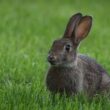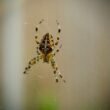Finding ants marching across your kitchen counter can be frustrating. But before you grab the nearest can of bug spray, take a moment to figure out what kinds of ants you’re dealing with. Different types of ants need different treatment methods, so knowing which species has invaded your home is the key to getting rid of them for good.
This guide covers the most common types of ants that homeowners find in and around their houses. Each species has its own habits, favorite foods, and best control methods. By learning to identify these ants correctly, you’ll save time, money, and hassle when it comes to pest control.
1. Carpenter Ants
How to Spot Them
Carpenter ants are the big guys of the ant world. Workers range from about 1/4 inch to 1/2 inch long, making them much larger than most other house ants. They’re usually black or dark reddish-brown, though some types can be black and red. These ants have a single bump between their middle section and back end, and their thorax (middle body part) looks evenly rounded when viewed from the side.
- Attracts and kills ants you see and the colony you don’t
- Fast results—see fewer ants in just days
- Ready-to-use stations, no mess or setup needed
- Perfect for kitchens, bathrooms, and any ant hotspots
Where They Live
Don’t let the name fool you. Carpenter ants don’t actually eat wood like termites do. Instead, they chew through it to make tunnels and rooms for their nests. They love moist or rotting wood, both inside and outside your home. Look for them around bathrooms, kitchens, window frames, door frames, and anywhere water damage has occurred. They also nest in hollow doors, under insulation, and in roof areas.
What They Eat and Do
Carpenter ants are night owls. They come out after dark to hunt for food, which includes other insects (both living and dead), sweets like honey and syrup, and a sugary substance called honeydew that comes from aphids. While they don’t eat the wood they tunnel through, they can cause serious structural damage over time if left untreated.
Why Knowing This Matters
If you see carpenter ants, you might have a moisture problem somewhere in your home. Getting rid of them means more than just killing the ants you see. You’ll need to find and fix any water leaks, replace damaged wood, and treat their nests directly. Surface spraying won’t work because it doesn’t reach the colony.
2. Odorous House Ants
How to Spot Them
These small brown to black ants measure about 1/16 to 1/8 inch long. The easiest way to identify them is the smell test. When you crush an odorous house ant, it gives off a distinct coconut or rotten coconut smell. They have a single node (bump) between their middle and back sections, though it’s often hidden under their abdomen.
Where They Live
Odorous house ants are the nomads of the ant world. They set up temporary camps under rocks, logs, mulch, or any outdoor debris. Inside your home, they’ll nest in walls, window frames, and insulation. During winter, they look for spots near heat sources like radiators or heating ducts.
What They Eat and Do
These ants have a sweet tooth and love honeydew from aphids, but they’ll also munch on household foods. They create visible trails from their nests to food sources, and you’ll often see them marching in lines. Their colonies can have multiple queens, and when disturbed, they can split into several new colonies (called budding).
Why Knowing This Matters
Odorous house ants respond well to sweet ant baits, but their ability to split into new colonies makes them tricky to control. You’ll need to use baits rather than sprays and focus on sealing up entry points to keep them out. Because they can form multiple colonies, treating just one nest often won’t solve the problem.
3. Pavement Ants
How to Spot Them
Pavement ants are small (1/16 to 1/8 inch long) and range from brown to black in color. Their legs and antennae are usually lighter than their bodies. The key identifying feature is the parallel grooves that run down their head and middle section, plus two small spines on their thorax. They have two nodes between their middle and back sections.
- Attracts and kills ants you see and the colony you don’t
- Fast results—see fewer ants in just days
- Ready-to-use stations, no mess or setup needed
- Perfect for kitchens, bathrooms, and any ant hotspots
Where They Live
True to their name, pavement ants love to nest under sidewalks, driveways, and patios. You’ll often see small piles of soil next to cracks in pavement where they’ve been excavating their nests. Inside homes, they nest in walls, under floors, and near foundations. They’re especially good at following pipes through concrete slabs to reach upper floors.
What They Eat and Do
Pavement ants are night shift workers who come out after dark to forage for food. They eat both greasy foods and sweets, plus proteins and seeds. These ants are fighters. They’re aggressive toward other ant species and will battle rival pavement ant colonies for territory. They swarm and mate during June and July.
Why Knowing This Matters
Because pavement ants prefer protein and grease, protein-based baits work better than sweet ones. Since they nest primarily outdoors under pavement, you’ll need to treat both indoor and outdoor areas. Don’t confuse them with other small dark ants, as the wrong bait type won’t work.
4. Fire Ants
How to Spot Them
Fire ants are reddish-brown to dark red and measure 1/8 to 3/8 inch long. You can see their stingers, and they’re extremely aggressive when their nest is disturbed. They have two nodes between their middle and back sections. But honestly, their behavior is the biggest giveaway. If ants swarm up your leg and start stinging, you’ve found fire ants.
Where They Live
Fire ants build large outdoor mounds that can be 2 to 4 feet wide in sunny, open areas. These mounds look like dome-shaped piles of loose soil. Fire ant colonies are massive, sometimes containing up to 500,000 ants. They rarely nest indoors, preferring exposed soil in yards, fields, and parks.
What They Eat and Do
Fire ants are omnivores that eat fats, sweets, proteins, and other insects. But their defining characteristic is their aggressive defense of their territory. When their mound is disturbed, they pour out in huge numbers and attack anything nearby. Their stings are painful and can cause serious allergic reactions in some people.
Why Knowing This Matters
Fire ants are dangerous. Their stings can send people to the hospital, especially those with allergies. Never try to treat fire ant mounds yourself. These ants require specialized baits and treatment methods that professionals use. If you see fire ant mounds on your property, call an exterminator immediately.
5. Argentine Ants
How to Spot Them
Argentine ants are small (about 1/8 inch long) and light brown to dark brown in color. They have a single node between their middle and back sections and no spines on their thorax. Their antennae have 12 segments with no club at the end. Unlike odorous house ants, they don’t smell when crushed.
Where They Live
These ants prefer moist environments and are often found near water sources. They nest under mulch, along sidewalks, in wall voids, and around foundations. What makes them unique is their ability to form “supercolonies” where multiple nests work together across large areas.
What They Eat and Do
Argentine ants feed on sweets and honeydew from aphids. They form long trails along foundation walls and into homes. Their supercolony structure means that ants from different nests don’t fight each other, allowing them to dominate large territories and push out native ant species.
Why Knowing This Matters
Argentine ants are extremely difficult to control because of their supercolony structure. Even when you eliminate one nest, others continue to send reinforcements. They need sweet baits, but success rates vary. Many people confuse them with odorous house ants, but the lack of smell when crushed is a key difference.
6. Pharaoh Ants
How to Spot Them
Pharaoh ants are tiny (about 1/16 inch long) and light yellow to golden in color with darker markings on their abdomen. They have two nodes between their middle and back sections. Their antennae have 12 segments ending in a 3-segmented club. Due to their small size, they’re often confused with thief ants.
Where They Live
In northern climates, pharaoh ants live exclusively indoors. They can’t survive outside in cold weather. They nest behind baseboards, in wall voids, inside cabinets, and near warm, moist areas like kitchens and bathrooms. They also hide in insulation and behind appliances.
What They Eat and Do
Pharaoh ants eat almost anything: sweets, grease, proteins, and even unusual items like toothpaste and soap. Instead of swarming to reproduce, they create new colonies through budding. When a colony gets too large or stressed, a group of workers takes some larvae and starts a new nest elsewhere.
Why Knowing This Matters
Never spray pharaoh ants. Spraying causes them to split into multiple new colonies, making your problem worse. These ants can spread diseases like Salmonella, so quick control is important. They require professional-grade baits that most homeowners can’t buy. If you suspect pharaoh ants, call a pest control professional.
- Attracts and kills ants you see and the colony you don’t
- Fast results—see fewer ants in just days
- Ready-to-use stations, no mess or setup needed
- Perfect for kitchens, bathrooms, and any ant hotspots
7. Thief Ants
How to Spot Them
Thief ants are among the smallest ants you’ll find in your home, measuring just 1/16 inch or less. They’re light yellow to brown in color and have two nodes between their middle and back sections. Their antennae have 10 segments ending in a 2-segmented club. People often call them “grease ants” because of their food preferences.
Where They Live
True to their name, thief ants often nest very close to or even inside other ant colonies, where they steal food and larvae. In homes, they nest under countertops, in wall voids, cabinet voids, and behind baseboards. Outside, they live in soil and rotting wood.
What They Eat and Do
Unlike most ants that prefer sweets, thief ants love protein and grease. They eat meat, cheese, peanut butter, nuts, and oils. They also feed on dead insects and rodents, which is concerning because they can pick up diseases and spread them to your food.
Why Knowing This Matters
Many people confuse thief ants with pharaoh ants since they’re similar in size. However, thief ants need protein-based baits, not sweet ones. If you use the wrong bait type, you won’t get results. Also, their presence might mean you have other ant colonies nearby since they often live as parasites near other ants.
8. Little Black Ants
How to Spot Them
Little black ants are small (about 1.5 mm for workers, up to 4 mm for queens) and dark brown to jet black with a shiny appearance. They have two nodes between their middle and back sections and no spines. Their antennae have 12 segments ending in a 3-segmented club.
Where They Live
These ants prefer outdoor nesting sites under rocks, in rotting logs, and in garden areas. When they come indoors, they nest in wall voids, under carpeting, and in woodwork. You’ll often see them forming trails along sidewalks and foundation walls.
What They Eat and Do
Little black ants eat everything: sweets, meats, grease, and insects. They form visible trails when foraging and can have multiple queens in one colony. They’re most active from June through August when they swarm to mate.
Why Knowing This Matters
Despite their small size, little black ants are aggressive toward other ant species and can quickly spread throughout a structure. They’re tough to control because they often have outdoor nests that keep sending more ants indoors. You’ll need to treat both indoor and outdoor areas to get lasting results.
9. Acrobat Ants
How to Spot Them
Acrobat ants range from 1/8 to 1/4 inch long and can be light brown to black, with some types being multicolored. The easiest way to identify them is their heart-shaped abdomen when viewed from above and their unique behavior of raising their abdomen over their head when disturbed (like a scorpion).
Where They Live
Acrobat ants love rotting or water-damaged wood. They often move into old carpenter ant or termite tunnels and galleries. Inside homes, they nest in wall voids, around door and window frames, and in insulation. Outside, they live under rocks, in logs, and in firewood piles.
What They Eat and Do
These ants primarily feed on honeydew from aphids that they protect and tend like livestock. Indoors, they also eat sweets and proteins. One concerning habit is their tendency to strip insulation from electrical wires, which can cause short circuits.
Why Knowing This Matters
If you find acrobat ants, you likely have moisture problems in your home. They’re attracted to water-damaged wood, so getting rid of them means fixing leaks and replacing damaged materials. Their habit of damaging electrical wires makes them a potential fire hazard, so quick action is important.
10. Crazy Ants
How to Spot Them
Crazy ants are small (1/16 to 1/8 inch long) and dark brown to black with a grayish sheen. What makes them unique isn’t their appearance but their behavior. They move in erratic, jerky patterns that look random and chaotic. They have a single node between their middle and back sections.
Where They Live
Crazy ants nest in shallow areas under floors, carpeting, and outdoor objects. They prefer spots near foundations and in mulch. They’re more active during autumn and after rainfall when their outdoor food sources become scarce.
What They Eat and Do
These ants feed on honeydew, sweets, and dead insects. Unlike other types of ants that form organized trails, crazy ants move in seemingly random patterns, which makes them harder to track back to their nests. They’re highly adaptable and can live in various environments.
Why Knowing This Matters
The erratic movement of crazy ants makes them challenging to control because you can’t easily follow them back to their nests. You’ll need patience to locate their entry points and nesting areas. Treatment timing is important since they’re most active in fall when they’re looking for indoor shelter.
What to Do Next
Quick Tips for Identifying Ants
When you spot ants in your home, grab a magnifying glass and look closely at a few key features. Use a penny for size comparison since ant measurements can be hard to judge. Notice whether they’re shiny or dull, and pay attention to their movement patterns. Some species like odorous house ants have distinctive smells when crushed.
When to Call the Professionals
Learning about different types of ants helps you understand what you’re dealing with, but some situations require professional help. Call an exterminator if you can’t figure out which species you have, if you’re dealing with dangerous ants like fire ants, or if your DIY efforts haven’t worked after 2-3 weeks. Also call professionals for ants that can cause structural damage (carpenter ants) or spread diseases (pharaoh ants).
Prevention is Key
The best ant control is prevention. Seal cracks around windows, doors, and pipes with caulk. Fix water leaks and eliminate moisture sources. Store food in airtight containers and keep eating areas clean. Trim trees and bushes away from your house exterior, and remove wood debris from around your foundation.
Remember, there are many types of ants out there, but these 10 species account for most of the ant problems homeowners face. Proper identification of these common types of ants is your first step toward effective pest control. When you know what you’re dealing with, you can choose the right treatment method and get your ant problem under control for good.



